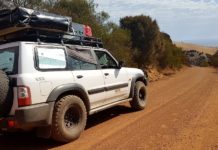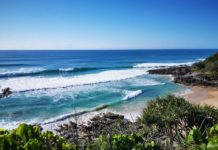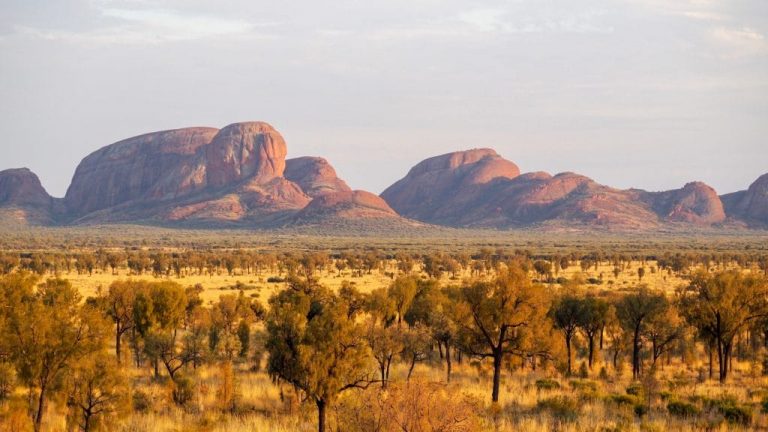
In Northern Australia, the Northern Territory (NT) covers more than 1,300,000 km². However, in spite of its size, it is also one of the least populated states. But this shouldn’t put you off, quite the opposite, the is so much to see! The Northern Territory of Australia is a land of awe-inspiring natural beauty, rich Aboriginal culture, and rugged outback adventures. From the iconic Uluru to the lush wetlands of Kakadu National Park, NT is a destination that promises unforgettable experiences. This article explores the best spots and activities in NT, the ideal time to visit, and budget tips for your journey.
Table of Contents
Darwin, capital of Northern Territory
Darwin, although a small town, is a vibrant, multicultural hub. Capital of the Northern Territory, in addition to exploring the city, you can do several activities there. Here are a few.
What are Darwin’s must-do activities?
Enjoy nature
Want to disconnect? Take a tour of the Botanical Garden and stroll among 42 hectares of vegetation. A favorite for the rainforest and the desert gardens. A good way to discover the flora of the region while taking a relaxing walk in the shade of the abundant vegetation.
Swimming in Darwin
The artificial lagoon allows you to swim in peace, while enjoying deckchairs and volleyball courts. Admission is free and the lagoon is patrolled by lifeguards from 9 a.m. to 6 p.m. every day. The lagoon is home to Cassiopeia fish, seaweed and jellyfish, all of which help maintain a healthy marine environment. The fish are known to occasionally visit swimmers.
You can also take a dip in the city’s Wage Lagoon wave pool. Open from 10 a.m. to 6 p.m. daily, the Wave Lagoon is one of Darwin’s most popular attractions. Admission is chargeable ($8 per person).
Finally, head to Leanyer Recreation Park or Palmerston Water Park to splash around in the pool and slide down the water slides. All for free!
Stroll through the local markets
Visit Mindil Market (to the sound of eMDee’s didgeridoo), Rapid Creek (Asian, Indian and Indonesian cuisine), Malak Market (organic produce), passing by Nightcliff, Parap and Palmerston. You will find something to enjoy!
Visit the museums
Go to MAGNT (Museum & Art Gallery Northern Territory) to discover the permanent collections of Aboriginal Art, temporary exhibitions and the famous ‘Sweetheart the crocodile’. The museum is open daily from 10 a.m. to 4 p.m. Admission is free.
Go shopping
Smith Street (“The Mall”) is the main shopping street. It is full of souvenir shops! You will also find fashion boutiques, big Australian brands. In the middle of The Mall you will also find one of the oldest pubs in Darwin: the old Victoria Hotel.
Go to a restaurant and/or have a drink
Find what you’re looking for on Mitchell Street for its trendy bars. Or, go to the Waterfront for a drink and/or taste fish & chips facing the sea.
Admire a sunset from the beach
Mindil, Vesteys and East Point are the best spots to enjoy the colors of dusk. They are also the meeting places for backpackers.
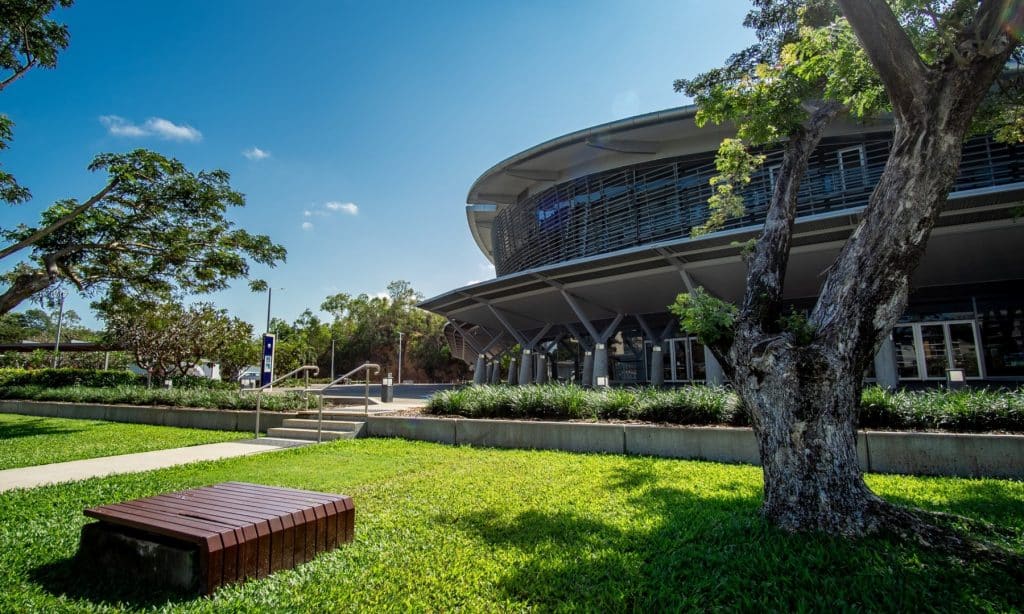
Litchfield National Park
Just a short drive from Darwin, Litchfield National Park is famous for its stunning waterfalls and crystal-clear swimming holes. It will take you on a day-long adventure. Its entrance is free and will allow you to enjoy many exceptional sites.
What to do at Litchfield National Park?
Admire the termite mounds at the entrance to the park
Enjoy swimming spots at Buley Rockhole, Florence Falls and Wangi Falls.
Visit the former site of a tin mine. A good way to learn a little more about the extraction process.
It is very pleasant to drive through the park: the red of the beaten earth contrasting with the bright green of the vegetation, all to the sound of cockatoos!
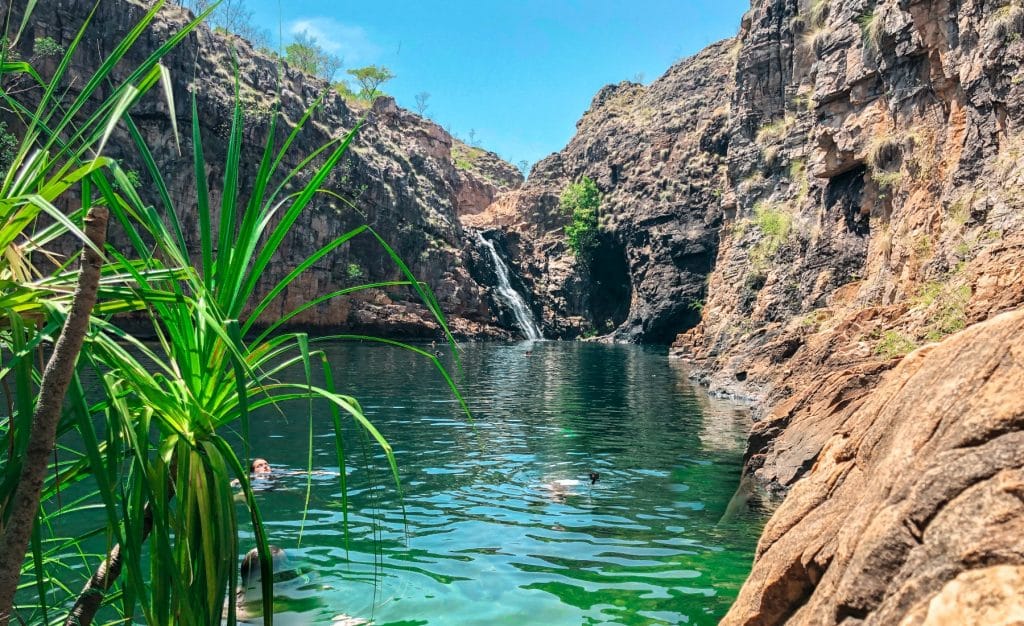
Kakadu National Park
Kakadu National Park is Australia’s largest park, with 20,000km² of the surface to explore! Kakadu is a UNESCO World Heritage site known for its biodiversity and ancient Aboriginal rock art. The park’s landscapes vary from wetlands and rivers to sandstone escarpments. Begin your visit at the Bowali Visitor Center. You will find a lot of information about the management of the park and the unique ecosystems it houses. Take the opportunity to find out about access to the spots that interest you. Most are only accessible by 4WD, particularly in the South.
What to see at Kakadu NP ?
Take a tour of the park’s most iconic waterfalls. Among them Gunlom Waterfall, where you will enjoy both a mythical view of the park as well as a swimming spot without any danger to cool off. A little further north, discover Barramundi Gorge and its clear waters. Finally, Jim Jim Falls and Twins Falls ensure you a complete change of scenery with their wild nature. These are the emblematic waterfalls of the park, however a 4×4 is mandatory to access them.
Would you like to cross paths with a crocodile? Open your eyes wide on the side of Yellow Water and the South Alligor River (which is very aptly named). It is not impossible to come across more than one basking in the sun on the banks.
Want to learn more about Aboriginal art? The artistic circuit from Burrungkuy to Nourlangie Rock will allow you to admire beautiful Aboriginal paintings. In Ubirr, enjoy the explanations of a guide (free) while discovering sublime Aboriginal paintings. At the top of a rock, you will enjoy an unobstructed view of the rest of the park, perfect to watch the sunset.
Practical Info
Hours: Open year round (may close depending on weather conditions)
Price: $25 during the wet season (November to April), $40 during the dry season (May to October)
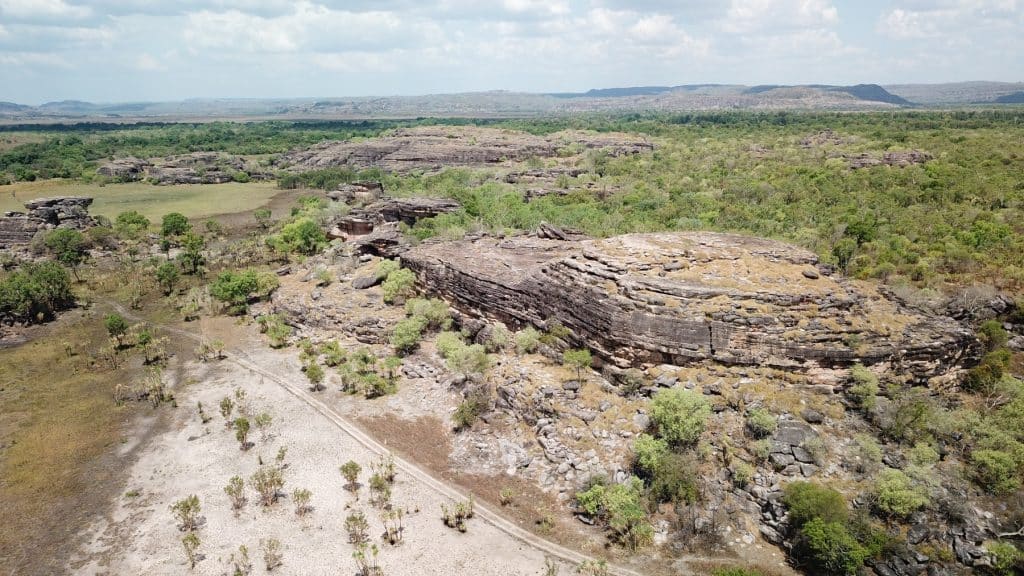
Katherine Hot Springs
Stop at Katherine to enjoy the hot springs. More extensive than those of Mataranka, this spring meanders through the rocks, providing for natural “seats”. Different access by stairs will allow you to jump into the water. Here again, you will have the choice: to swim among the hustle and bustle of the day, or to let yourself be tempted by the experience of swimming under the stars… You can also stroll along the river at Low-Level Reserve.

Katherine Gorge (Nitmiluk National Park)
Two days are not enough to visit Nitmiluk. Hike on foot or paddle a canoe to admire the various rock-cut gorges and abundant waterfalls.
Best swimming spots: Upper Pool, Lower Pool, Sweetwater Pool
Best hikes
Baruwei Lookout Loop (1.1 km): Many steps await you to discover a spectacular view of Katherine Gorge.
Sweetwater Pool & Edith Falls (8.9 km): Discover a succession of waterfalls and other natural pools in the shade of palm trees, in lush vegetation.
Jatbula Trail (60 km): For the most complete immersion, go for 4 to 6 days of hiking through Nitmiluk National Park. Cross different types of landscape, admire rocky gorges, observe Aboriginal memories forgotten on the walls…
The highlight of the show? The sunset gives the green light to an incredible ballet of hundreds of bats waking up…
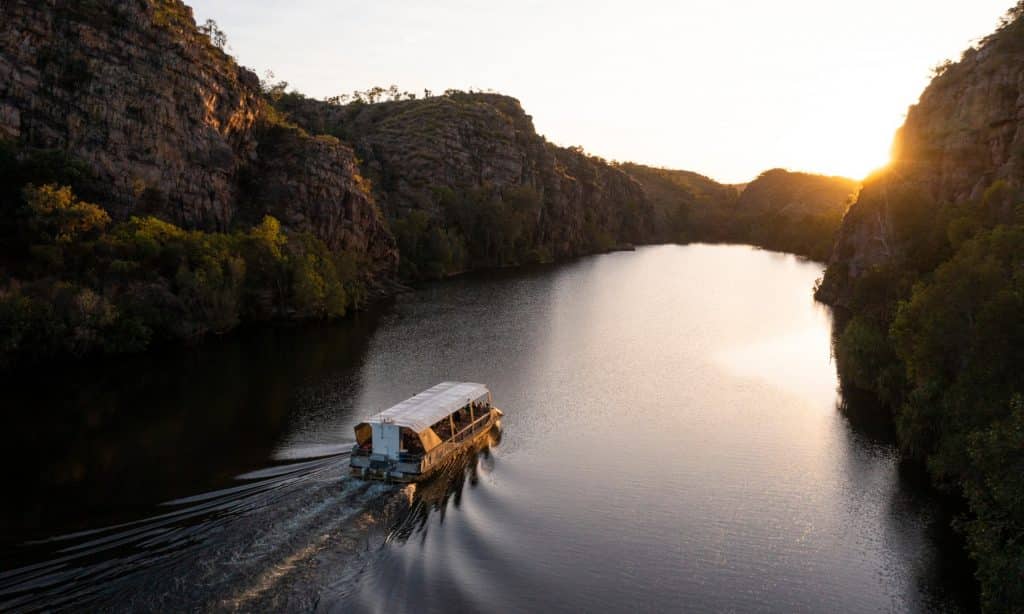
Mataranka, Bitter Springs
Arriving from the South, Mataranka certainly marks a notable change of scenery: the desert gives way to a green and wet mangrove. No doubt about it, you are in the tropics! To relax, you can enjoy two types of hot and natural springs.
- The Bitter Springs provides a small bathing circuit in a beautiful setting, closer to nature. A note of caution, this pleasant and frequented setting is also the habitat of crocodiles!
- You will also have free access to the Thermal Pool of the city camping which has a more family oriented atmosphere. If like me you want to avoid the crowds and dream of an unusual spot: try a midnight swim or take a dip at dawn!
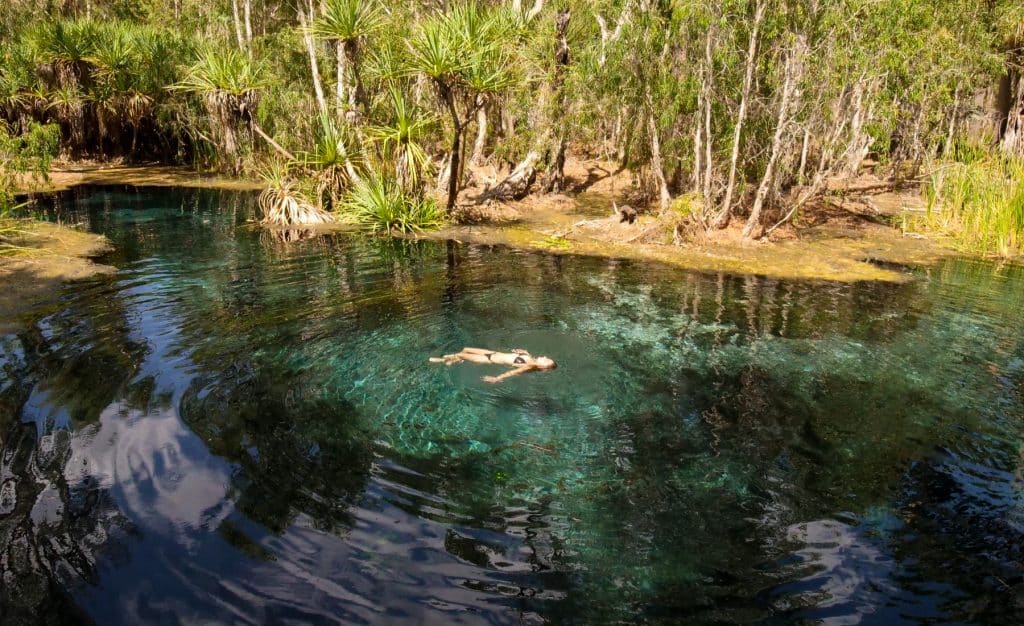
On Stuart Highway – while driving
During your journey on the endless Stuart Highway, between Darwin and Alice Springs, a few stops will be unmissable. Here are some ideas for unusual spots to stop for well-deserved breaks on the road.
Wycliffe Well
Take a picture with aliens in this funny gas station. Be careful, they are even present inside the shop!
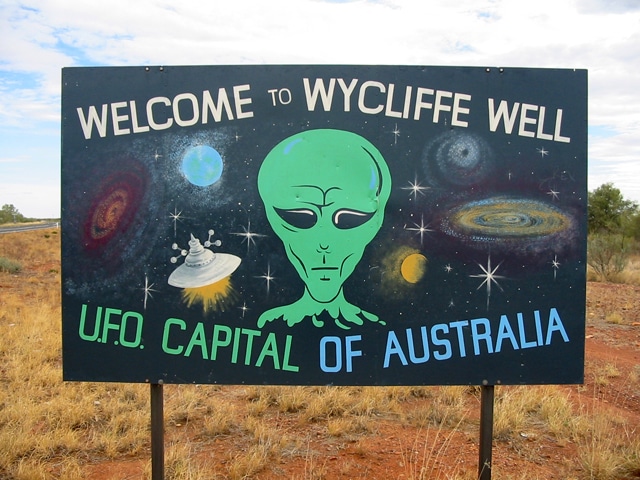
Newcastle Waters
For something a little different, visit the abandoned houses and restaurants of this ghost town. Newcastle Waters was once a large and historic cattle station. The main attraction is Drovers Memorial Park which has an impressive herdsman statue. The city is located 790 km north of Alice Springs and 716 km south of Darwin.
Daly Waters
This little pub lost in the middle of nowhere and one of the best known in Australia. The tradition of the bar is that each visitor leaves a souvenir after his visit. Complete the collection as you wish: expired identity card, old plane tickets, postcard or underwear. Everything is allowed !
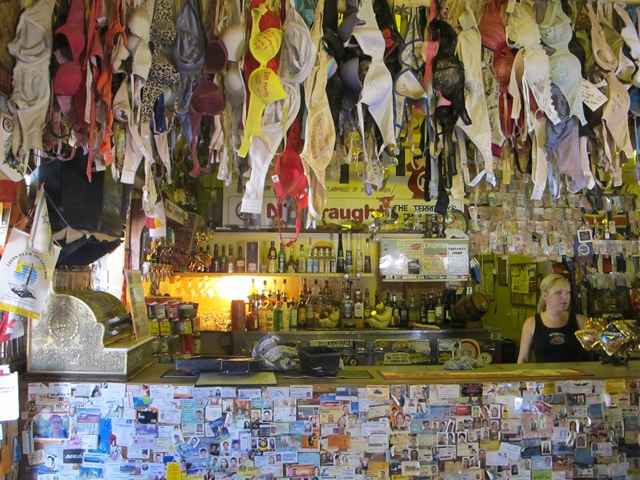
Devils Marbles (Karlu Karlu)
A multi-million-year-old geological show, Karlu Karlu is quite interesting to visit on the way.
The marble of the devil is actually granite, which sparkles in the sun. The Warumungu, Kaytetye, Alyawarra and Warlpiri Aborigines who have been watching over the place since the dawn of time have simply called it a “rounded rock block”. A very befitting name.

Alice Springs
In the middle of the desert, Alice Springs is the only big city in the outback (33,000 inhabitants). This is why a stop is essential before venturing further! Stroll through the shopping street of Todd Street and enter its many Aboriginal art galleries (Muk Muk Indigenous Fine Art, Mbantua, Papunya Tula…).
Climb to the top of the Anzac Hill Memorial and enjoy a 360° view of the city and its surroundings. Then, discover the desert flora and fauna by visiting the Olive Pink Botanic Garden. The city is peaceful and there is a bohemian atmosphere.
Our advice: Take advantage of the conveniences of the city before taking the road to the Outback (supermarkets, showers, WCs, laundries!)
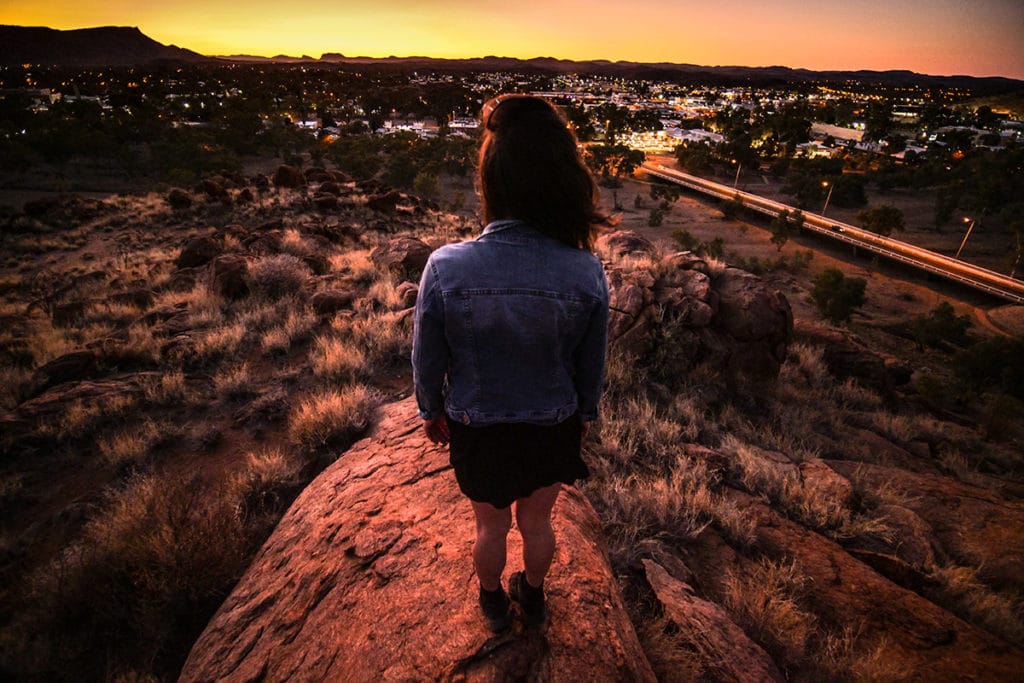
East MacDonnells Ranges
At East MacDonnells Ranges you will find unspoiled natural areas, such as Emily (Anthwerrke) and Jessie Gap (Yeperenye). It is a little less crowded than the west side. If you are really quite and go in the early morning or at dusk you will be able to see amazing wildlife!
Practical Info
The main road to access the various points of interest is paved (Corroboree Rock Conservation Reserve for example). But a few kilometers will lead you over gravel roads, including Trephina Gorge Nature Park and Ellery Creek Big Hole. A day is enough to visit these sites because the steps are never very long. Plan an extra half day if you want to join Ruby Gap Park, which has a long stretch of off-road.

West MacDonnells Ranges (Tjoritja)
The MacDonnells mountain range stretches west for more than 161km. There is a lot to see, mainly gorges such as Simpsons Gap, Serpentine Gorge, Ormiston Gorge, and Glen Helen. The only access to Standley Chasm (Angkerle Atwatye) is not free ($ 12), the rest is. The protected site of Ocher Pits is pretty incredible. The extracted ocher is still used today for the ceremonies of Western Arrernte, Aboriginal community to which the mine belongs.
Uluru & Kata Tjuta National Park
This UNESCO World Heritage Site promises a magical, spiritual, and highly interesting discovery. The park is located approximately 500 km from Alice Springs.
Start your trip with a visit to the cultural center. It will provide you with information about the Aboriginal culture, the symbol of Uluru and how this park is now managed.
Uluru is the largest sandstone monolith in the world (348 meters high and 9.4 km wide). It is 30 km from Kata Tjuta, consisting of 36 sandstone domes spanning 20 km. To enjoy these unique places, we advise you to take a few hiking trails.
What hikes to do in Uluru-Kata Tjuta?
- Minymaku Wald and Watiku Platform Trail (1.4 km): Accessible to young and old, this walk allows you to admire Uluru from afar, to enjoy its surroundings.
- Mala Walk (2 km): This walk is offered daily and free of charge by a park ranger. It takes you to the foot of the rock and tells you the story of Uluru and its people.
- Walpa Gorge Walk (2.6 km): Very accessible, this walk immerses you in the bowels of the domes. Immersion guaranteed!
- Valley of the Winds (7 km): This loop starts in Kata-Tjuta and takes you to breathtaking views in the Valley of the Winds.
- Uluru Base Walk (10.9 km): If you prefer to be at the base of Uluru, this is the walk you should choose.
Not to be missed: The sunrises and sunsets on both Uluru and Kata-Tjuta are stunnig and worth the detour on their own.
Practical Info
Since 2019, it is forbidden to climb Uluru.
Park entry: $38 for 3 days.
Park hours: 5 a.m. to 9 p.m. in summer, 6:30 a.m. to 7:30 p.m. in winter.
Cultural center hours: 7 a.m. to 6 p.m.

King’s Canyon (Watarrka National Park)
Like Uluru & Kata Tjuta Watarrka National Park is accessible via an asphalt road. However, if you have an appropriate vehicle, you can take one of the “shortcuts” via the Mereenie Loop or another track. Before leaving check the weather conditions well and check if they require a permit (as you will probably cross Aboriginal lands).
What hikes to do in King’s Canyon?
- South Wall Return (5 km): This trail joins the heights of King’s Canyon and offers you a shorter version of the Rim Walk.
- Kings Creek Walk (almost 3km): Easy, this trail runs along the river, passes at the foot of the limestone cliffs and leads you to the center of the canyon.
- Rim Walk is a 6km loop. If we had to recommend just one hike, it would be this one. The trail is more difficult than the others as some steep climbs are to be expected. But the fact of gaining height is well worth the detour. In a lunar setting, walk along the steep cliffs sculpted by erosion and enjoy a bird’s eye view of the canyon and the Garden of Eden.
- Kathleen Springs Walk (3 km): Shaded, this trail takes you to a pool to cool off and picnic near the water.
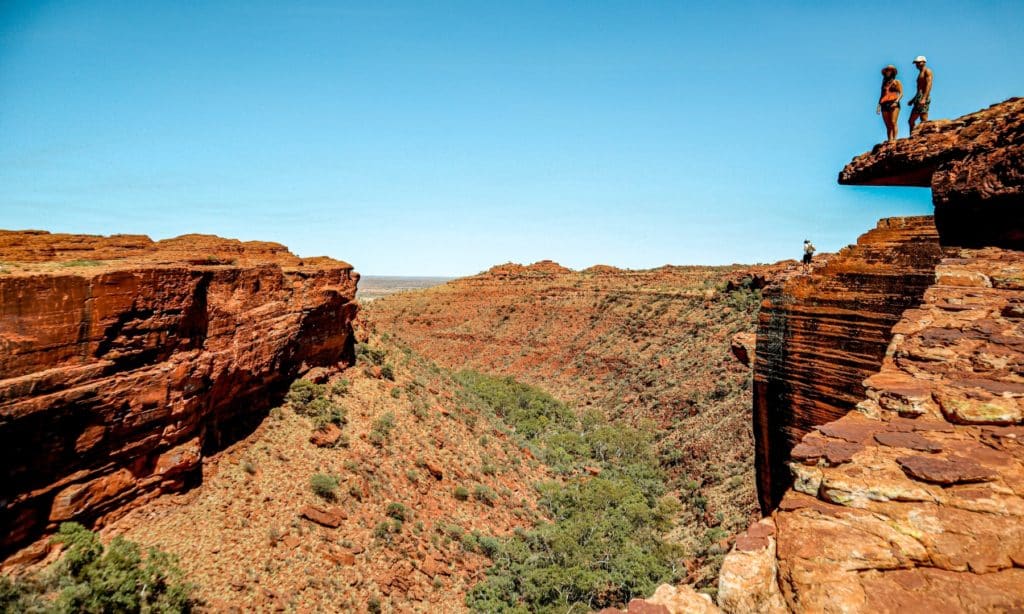
Best time to visit Northern Territory
The best time to visit the Northern Territory is during the dry season, from May to October. During this period, the weather is cooler, and most roads and attractions are accessible. The wet season, from November to April, can be hot and humid with heavy rains and possible flooding. If you visit during this period, always make sure to check the road conditions before heading to a National Park.
Budget Considerations
- Accommodation: Varies from luxury resorts to budget hostels and camping. Advance booking is recommended.
- Food: Options range from fine dining in cities to more affordable local eateries. You will always find supermarkets to refill.
- Transport: Renting a car or a campervan is advisable for flexibility, but remember that distances are vast.
- Tours: Guided tours can be pricey but offer unique insights and access to remote areas.
The Northern Territory of Australia is a land of contrasts and ancient cultures, offering a diverse range of experiences for every type of traveler. Whether you’re seeking adventure, cultural insights, or just a chance to connect with nature, NT has something special to offer. Plan your trip according to your interests, budget, and the season to make the most of this extraordinary destination.




















